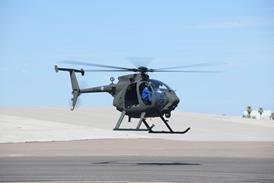In the words of Douglas Adams' Hitch-hikers' Guide to the Galaxy, "Don't panic!" - well, not yet, anyway. Similarly, however, don't relax. The recent turmoil in Asian stock and currency markets is going to have a profound effect on the air-transport business and its suppliers. Those forecasters, whose confident predictions for world air-traffic growth have been based squarely on the Asian miracle, might also like to reconsider.
All the latest evidence from the Asian market is that the predictions of sustained annual economic growth of more than 4% in the region may have been just a little too rosy. In turn, that implies that the predictions of world-beating annual passenger-traffic growth of near-double 4% must also be in question.
The so-called "Tiger" economies of Asia have given birth to some of the most aggressive - and successful - airlines in the world, and when any of those tiger cubs start to suffer reversals or slowdowns, it is time to take a closer look at what is going on. When the cubs in question are the likes of Cathay Pacific and Singapore Airlines (SIA), it is definitely time.
Cathay's is in some ways a unique case, with the recent hand-over of Hong Kong to China adding an extra factor to be taken into account when looking at traffic figures which are not meeting expectations. Cathay, however, has been a robust, highly profitable carrier for a long time, and seemed to be well-set-up for a post-colonial future, especially as majority control had passed to mainland Chinese interests. Nevertheless, its traffic figures have plummeted, and it is delaying deliveries of some of the new aircraft it has on order.
SIA is not showing traffic losses like Cathay's (and its profits are still booming), but it is moving towards selling some of its fleet to reduce its exposure to a possible drop in aircraft values. The only reason for a drop in airliner market values is a slowdown in the market itself, leading to over-capacity: if a prudent airline like SIA is worried about a drop in aircraft values, it must be because it foresees a surplus in capacity.
The latest long-term forecasts coming from both the big-airliner manufacturers show the carriers of Asia-Pacific (including China) operating around a quarter of the existing world fleet, and taking one-third of all new deliveries over the next 20 years. Those predictions are based on estimates from sources such as IATA, which show traffic growth in China averaging 7.5% a year through to 2010, and 6% a year for the same period for Taiwan.
If those rates are not sustained (and certainly, there will have to be some remarkable growths to recover even the ground lost so far by airlines such as Cathay) there is a huge part of the future airliner market with a large question-mark hanging over it.
If passenger traffic does not grow at the predicted rates, then, in the short term, load factors and yields will drop. In the longer term, airlines may be able to apply corrective measures by cutting their fleets and future fleet orders, but given that the aircraft market is a much less flexible and responsive one than is the passenger-traffic market which feeds it, the negative effects of a downturn now could last for several years.
It is, of course, ironic that the prospects of such a downturn should surface just as both of the big manufacturers are gearing up for greater production, and one of them is suffering for having tried to increase its production rates too quickly. It can be argued that, seduced by the rosy predictions of market growth, manufacturers have pursued market share rather than profits in the last few years. In building production to support that dash for market share, they could be left terribly exposed if the recent market turmoil in Asia leads to a sustained slowdown.
There is no other market which could absorb the numbers of aircraft which the Asian carriers are (or were) expected to take. If they do not sustain their growth, the manufacturers will have to rein back production. There is a feeling that some in the manufacturing community have believed that they could beat the regular boom-bust cycle by relying on the miracle of never-ending growth in Asia. They may have grabbed hold of the wrong end of the tiger.
Source: Flight International























